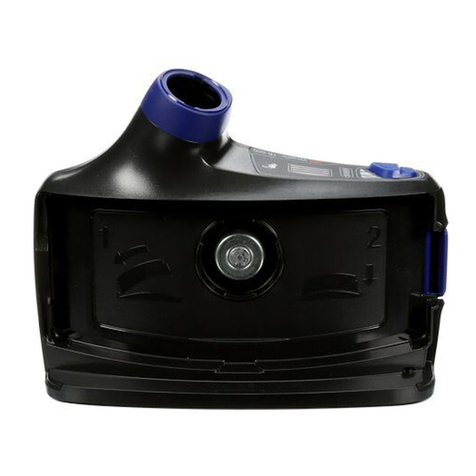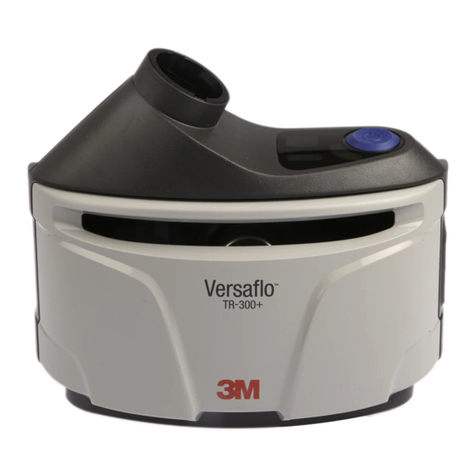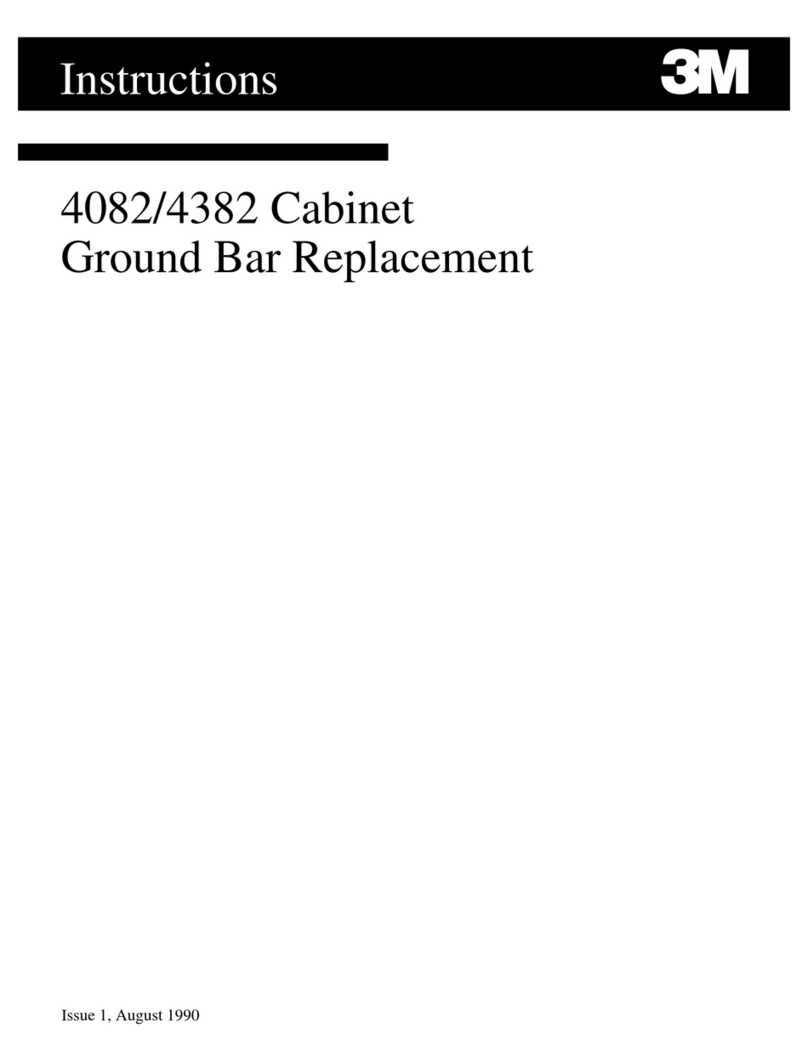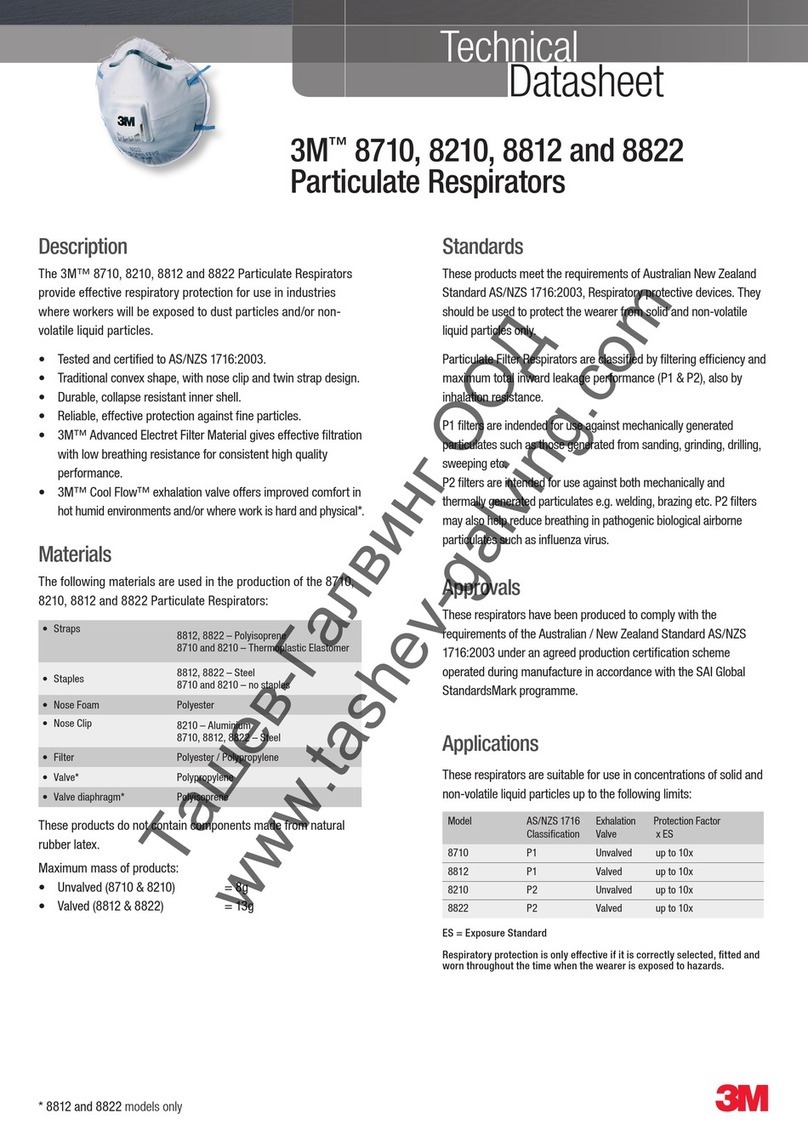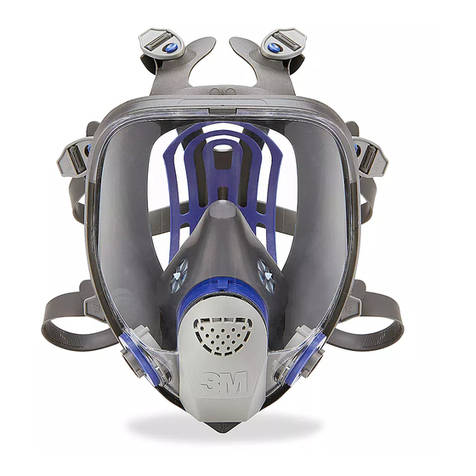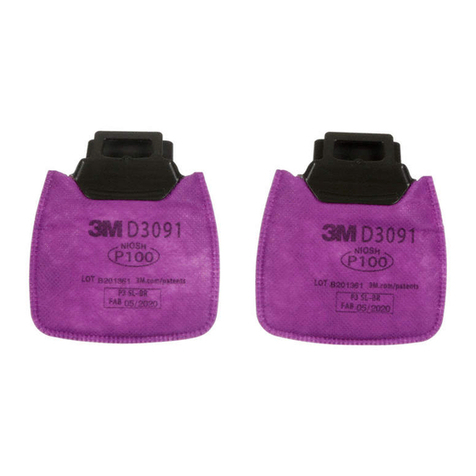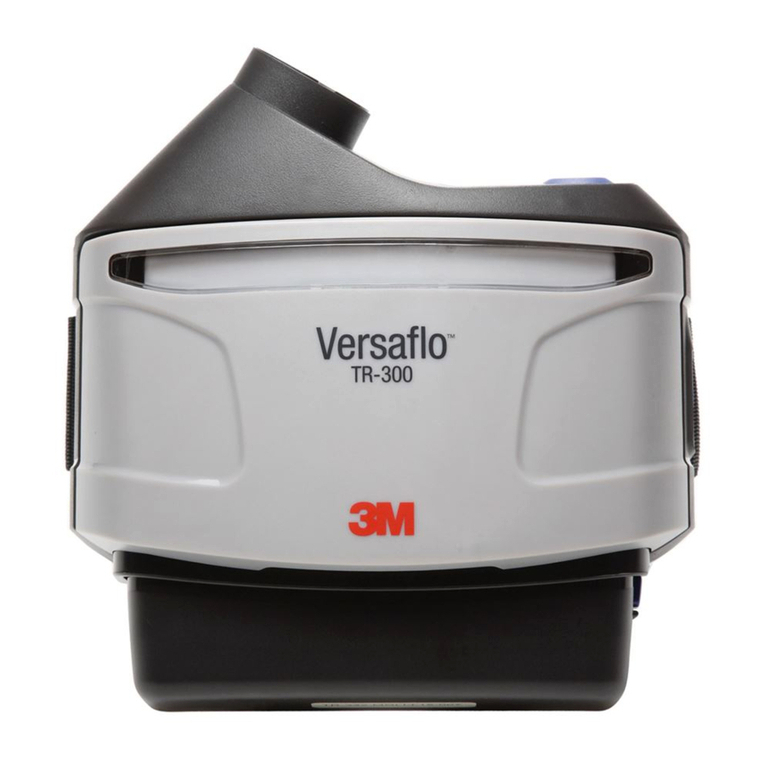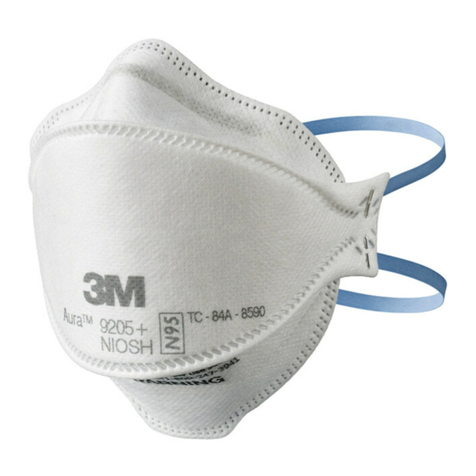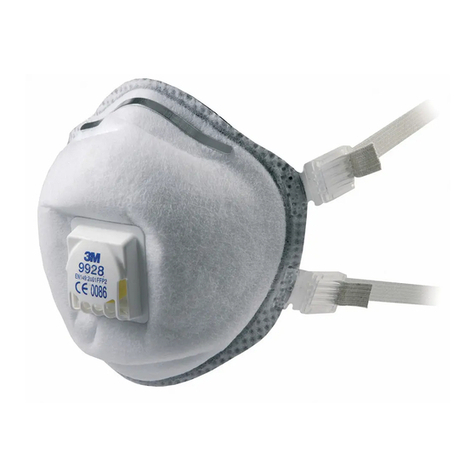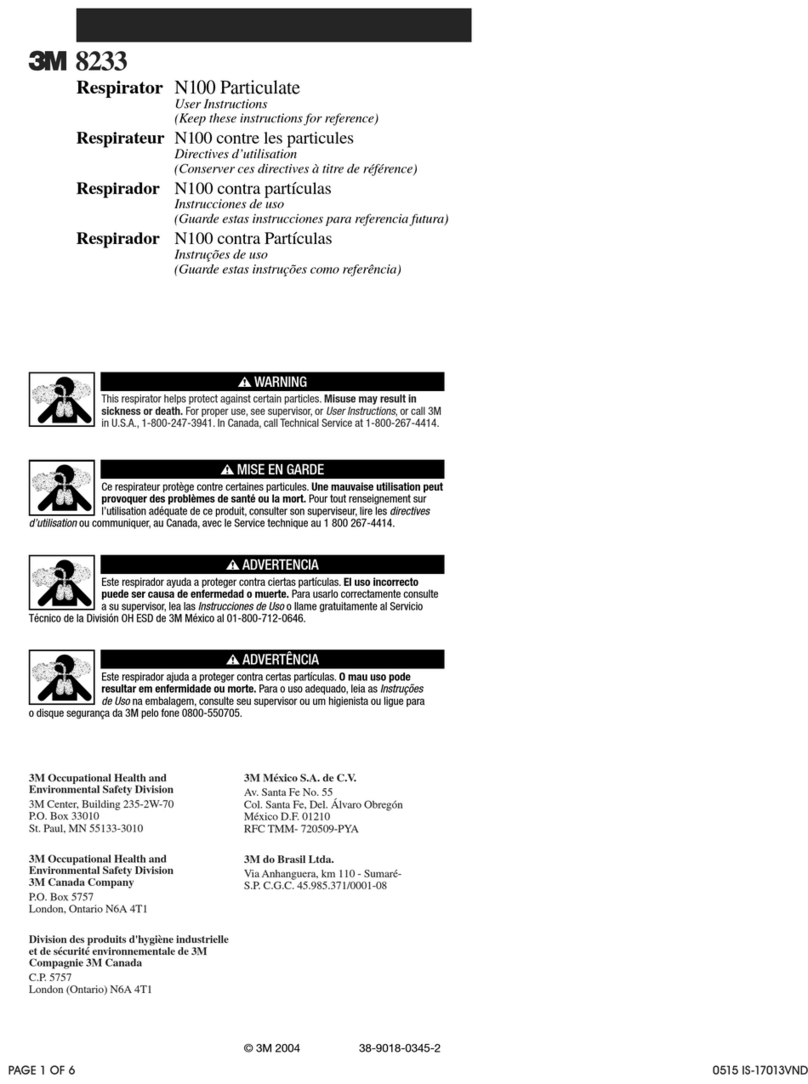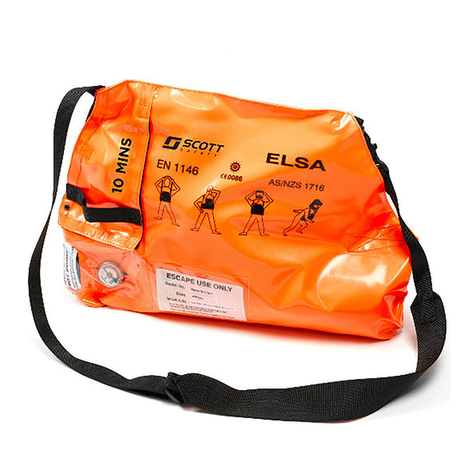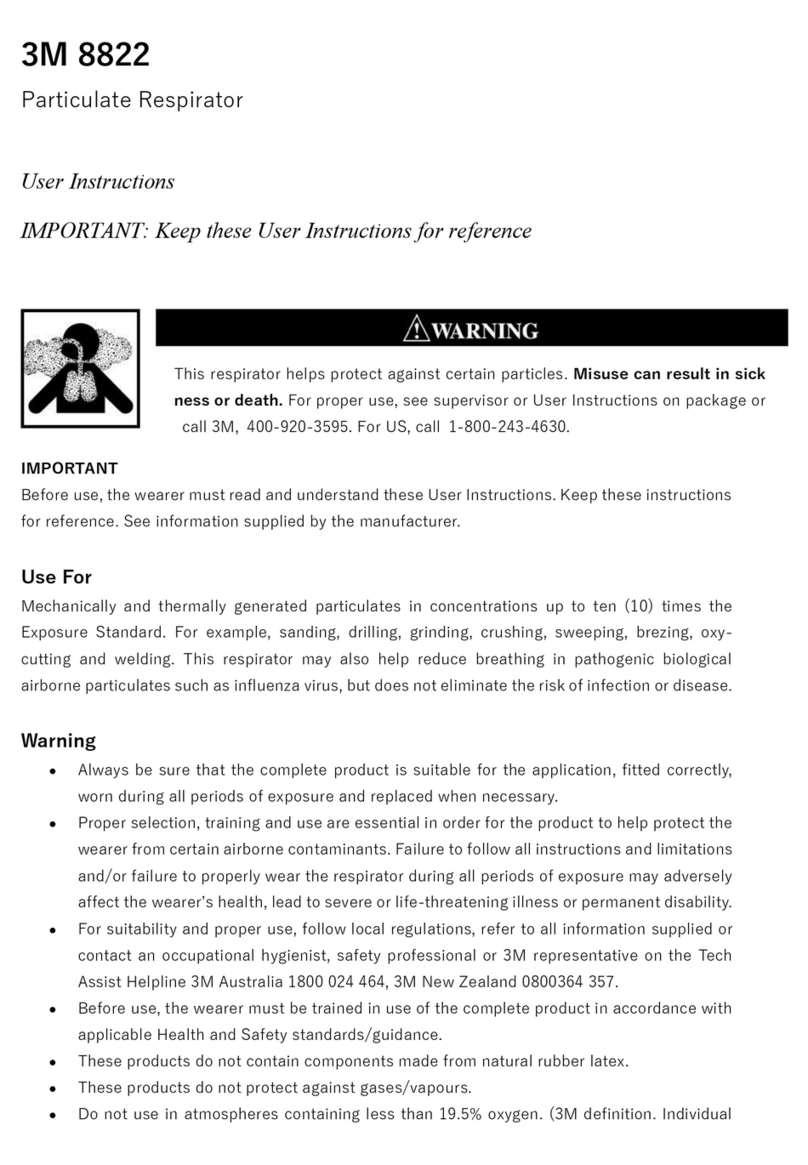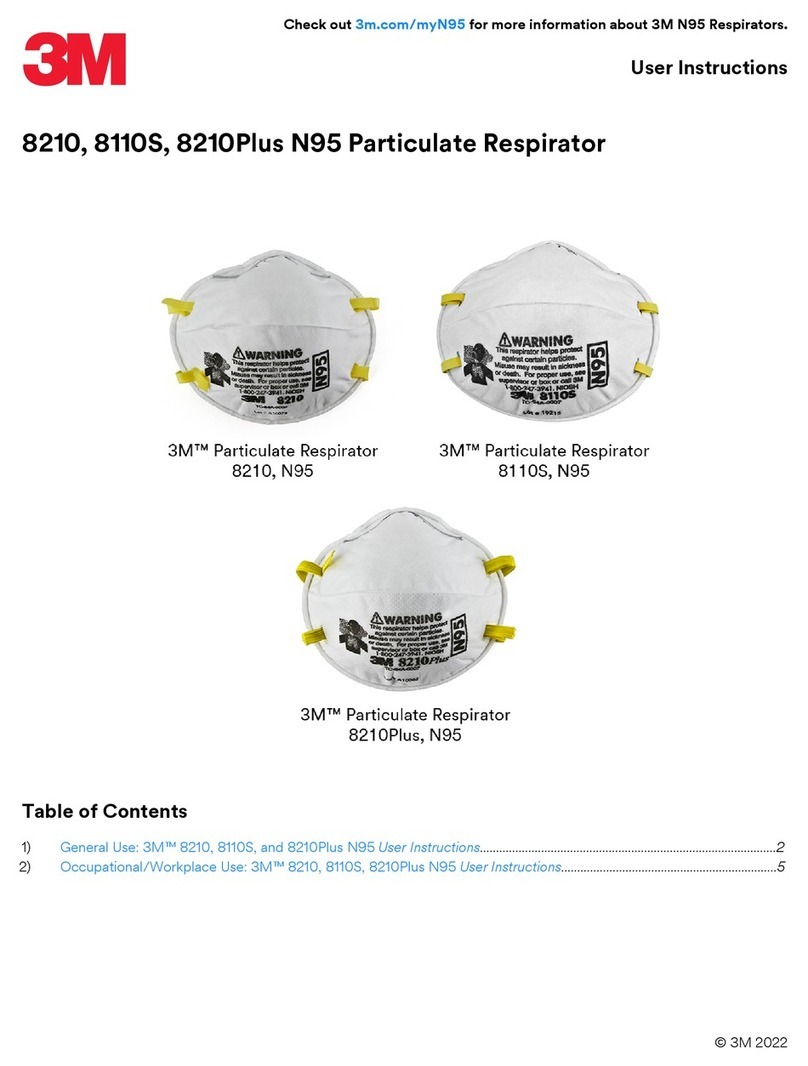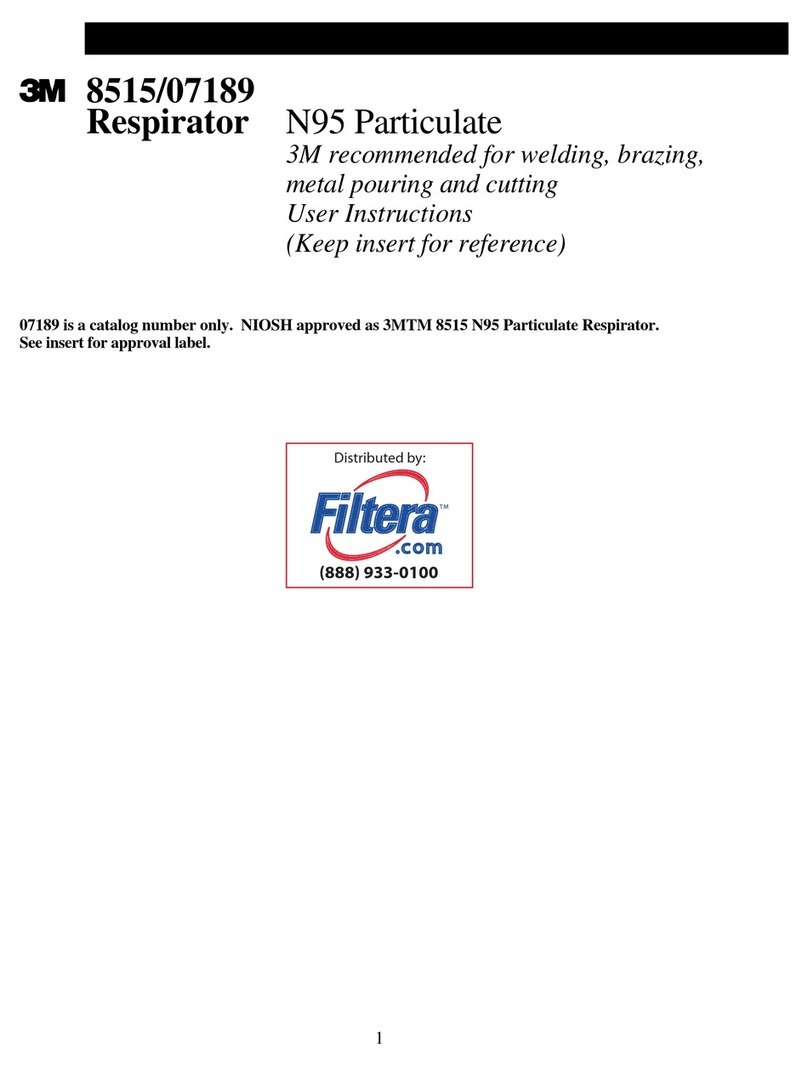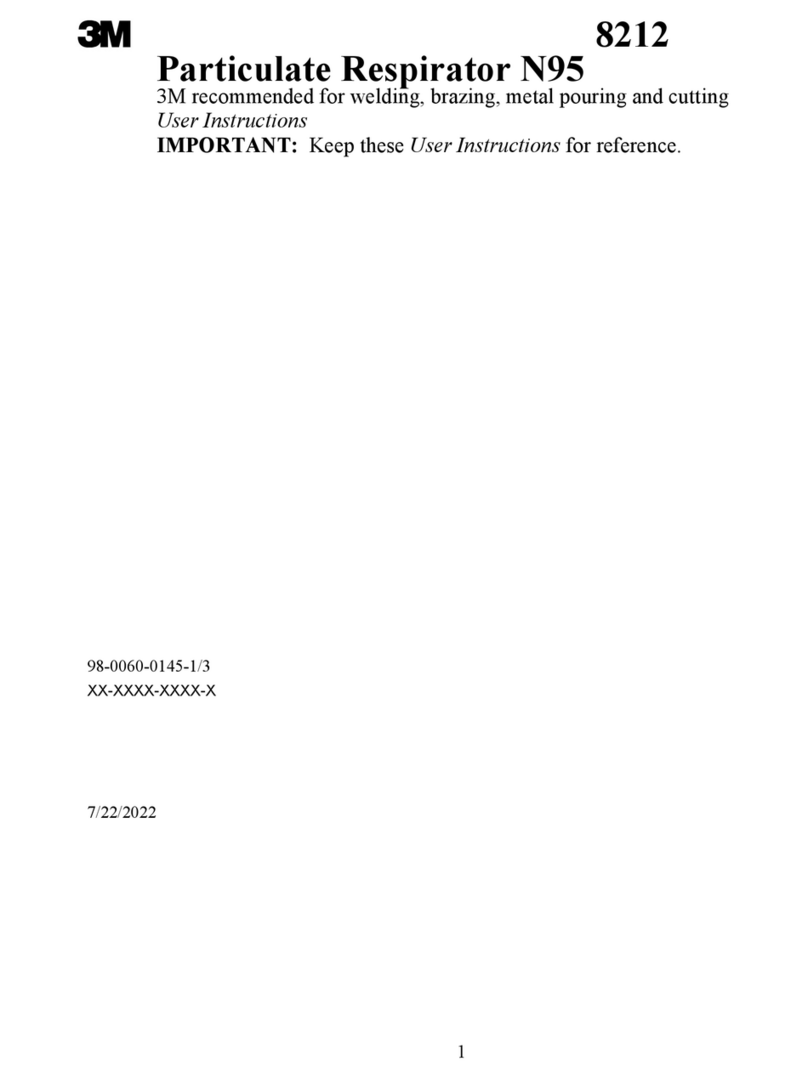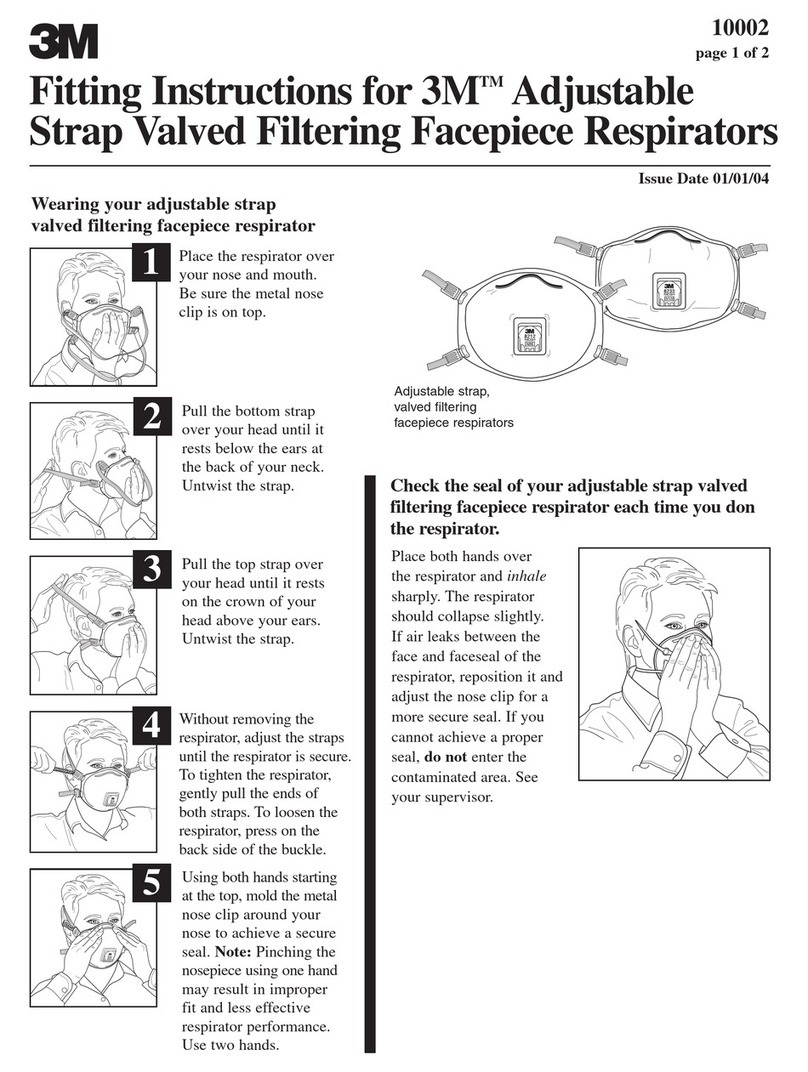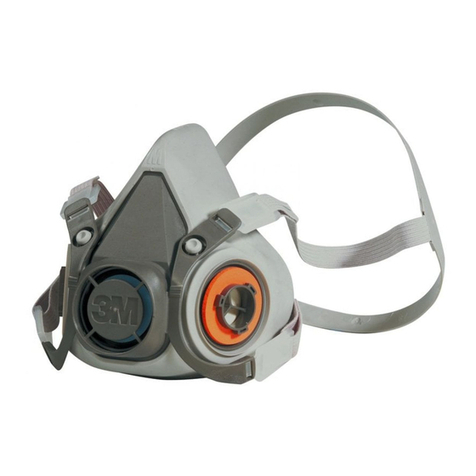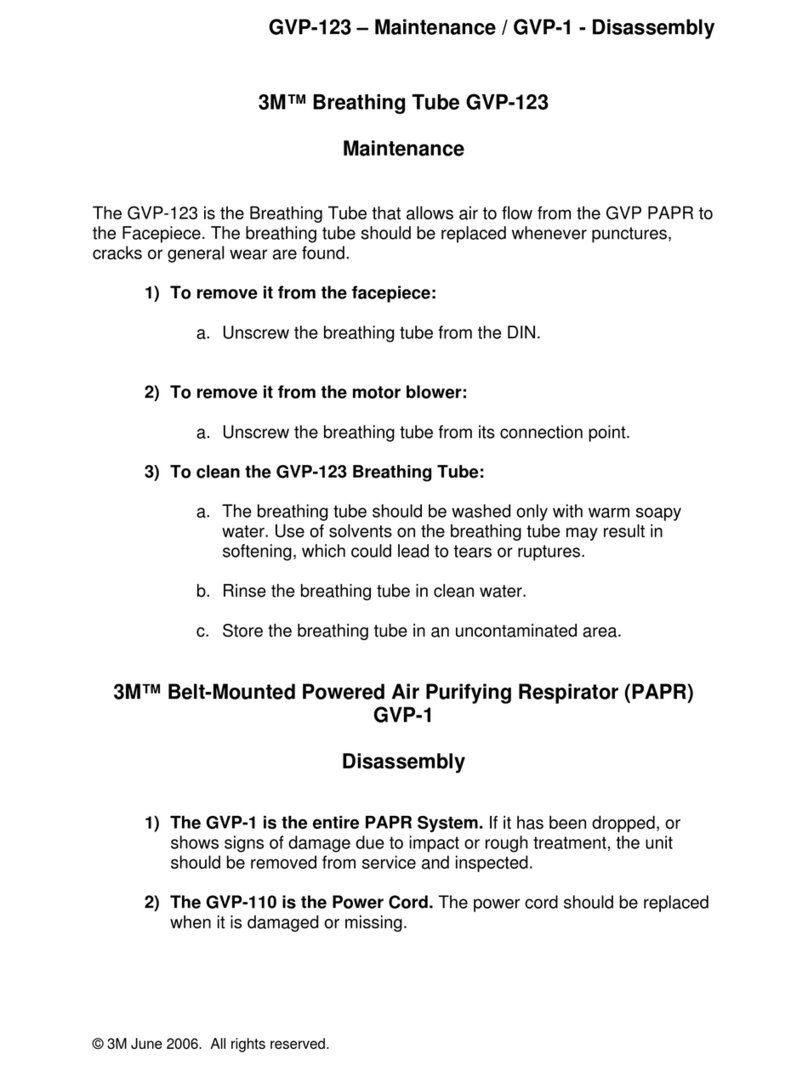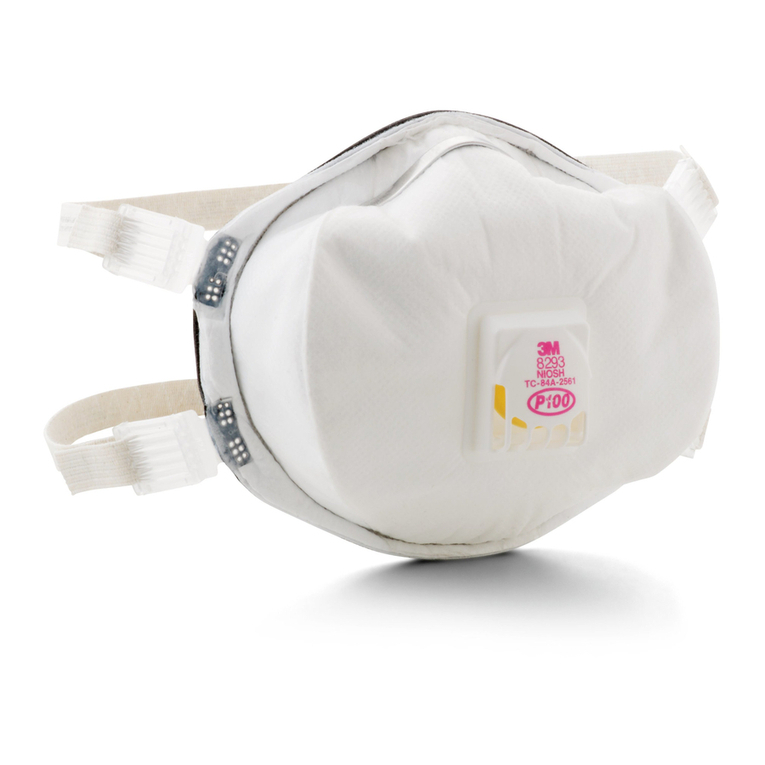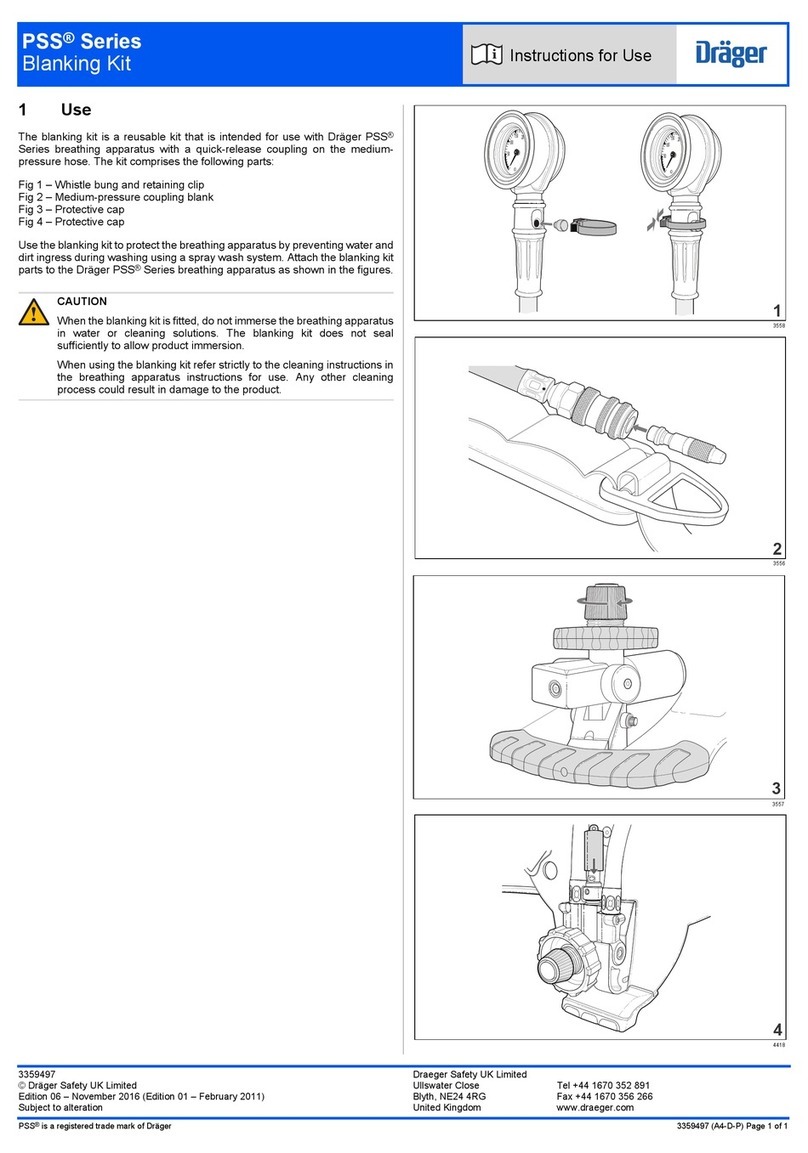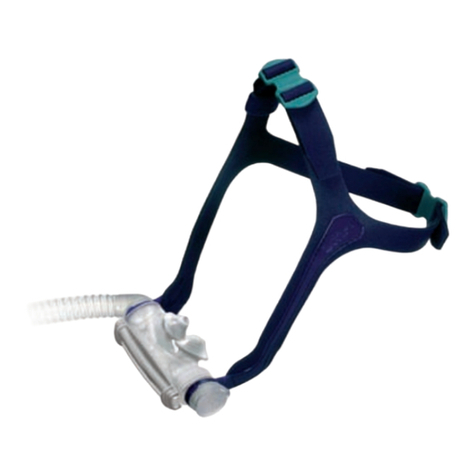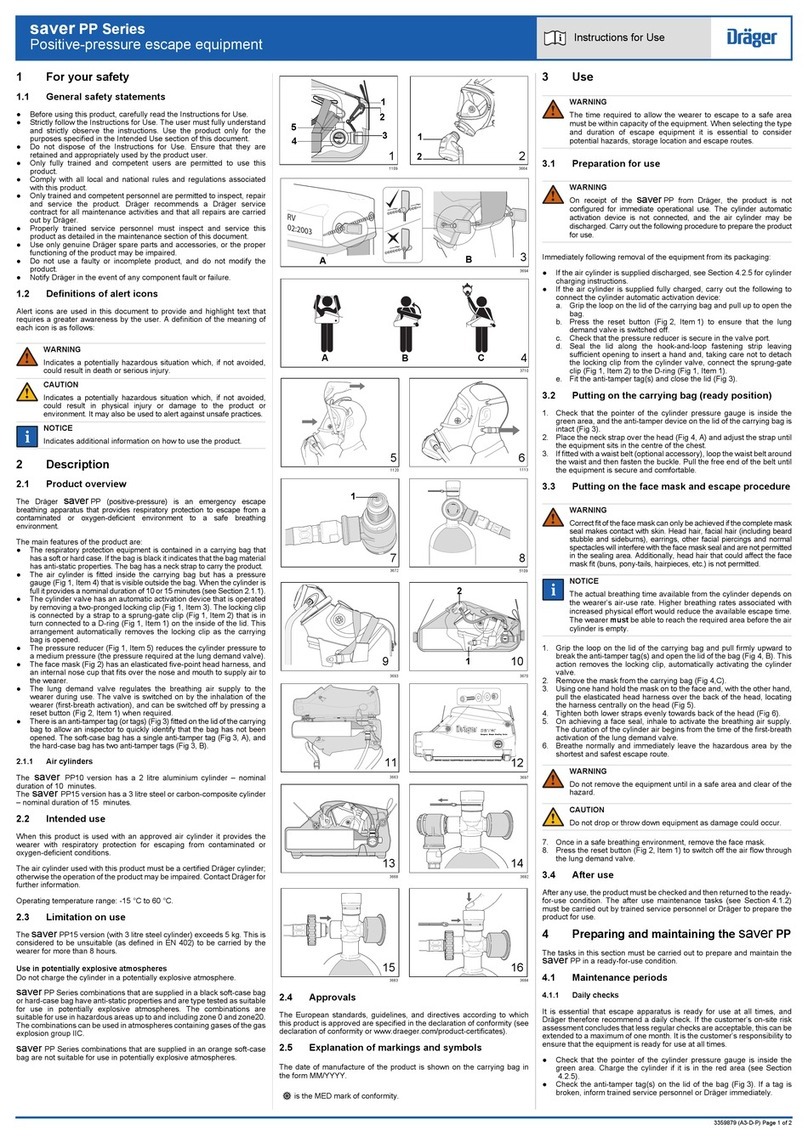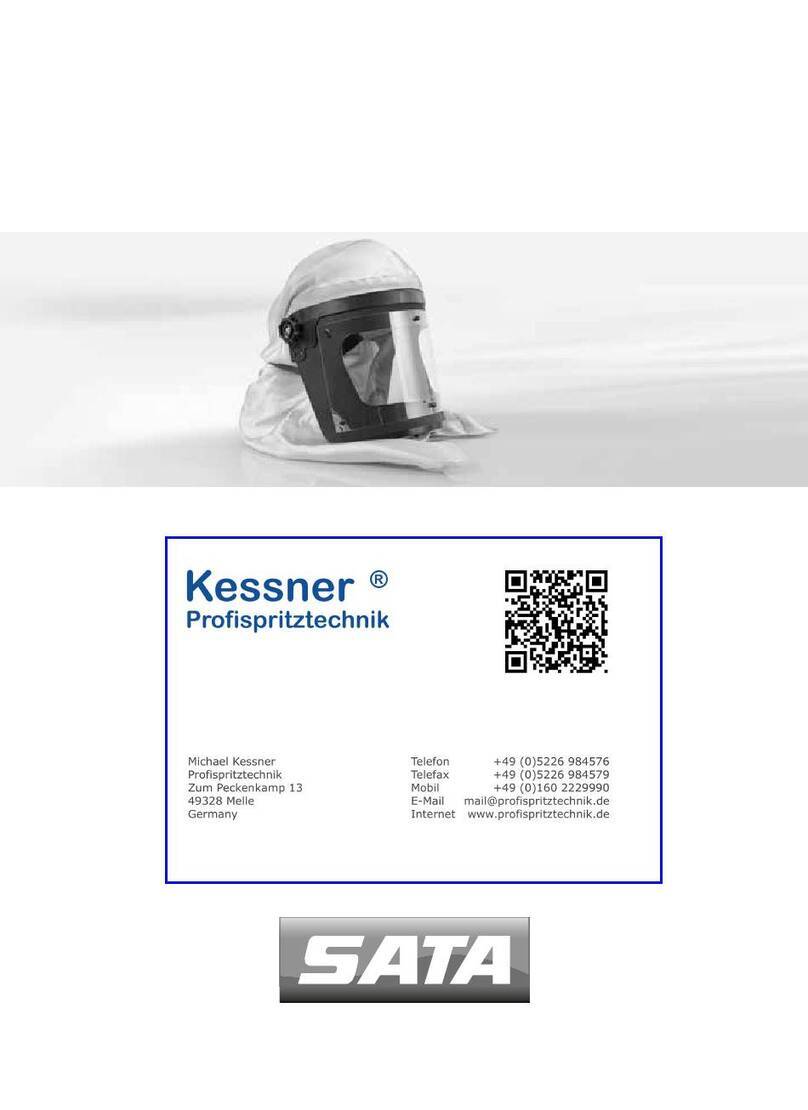
substance specific standards. In Canada, CSA standard Z94.4 requirements must be met and/or
requirements of the applicable jurisdiction, as appropriate. **
3. The particles which can be dangerous to your health include those so small that you cannot see them.
4. Leave the contaminated area immediately and contact supervisor if dizziness, irritation, or other distress
occurs.
5. Store the respirator away from contaminated areas when not in use.
6. Inspect respirator before each use to ensure that it is in good operating condition. Examine all the
respirator parts for signs of damage including the two headbands, attachment points and noseclip. The
respirator should be disposed of immediately upon observation of damaged or missing parts. Filtering
facepieces are to be inspected prior to each use to assure there are no holes in the breathing zone other
than the punctures around staples and no damage has occurred. Enlarged holes resulting from ripped or
torn filter material around staple punctures are considered damage. Immediately replace respirator if
damaged. Staple perforations do not affect NIOSH approval.
7. Dispose of used product in accordance with applicable regulations.
Use Limitations
1. This respirator does not supply oxygen. Do not use in atmospheres containing less than 19.5% oxygen.
2. Do not use when concentrations of contaminants are immediately dangerous to life and health, are
unknown or when concentrations exceed 10 times the permissible exposure limit (PEL) or according to
specific OSHA standards or applicable government regulations, whichever is lower. *
3. Do not alter, wash, abuse or misuse this respirator.
4. Do not use with beards or other facial hair or other conditions that prevent a good seal between the face
and the sealing surface of the respirator.
5. Respirators can help protect your lungs against certain airborne contaminants, however, they will not
prevent entry through other routes such as the skin, which would require additional personal protective
equipment (PPE).
6. This respirator is designed for occupational/professional use by adults who are properly trained in it’s use
and limitations. Respirators are not designed to be used by children.
7. Individuals with a compromised respiratory system, such as asthma or emphysema, should consult a
physician and complete a medical evaluation prior to use.
8. When stored in accordance with temperature and humidity conditions specified below, the product may
be used until the “use by” date specified on the packaging.
** For Use in China: For the selection, use and maintenance of respirator, please refer to China
national standard GB/T 18664.
* For Use in China: Do not use for oil based particles. Do not use for particles in concentrations that
exceed the maximum allowable concentration required by the applicable regulation and standard. The
maximum allowable concentration is obtained by multiplying the Assigned Protection Factor (APF)
provided by GB/T 18664 “Selection, Use and Maintenance of Respiratory Protective Equipment” and
the permissible Occupational Exposure Limit (OEL) of the contaminant.

